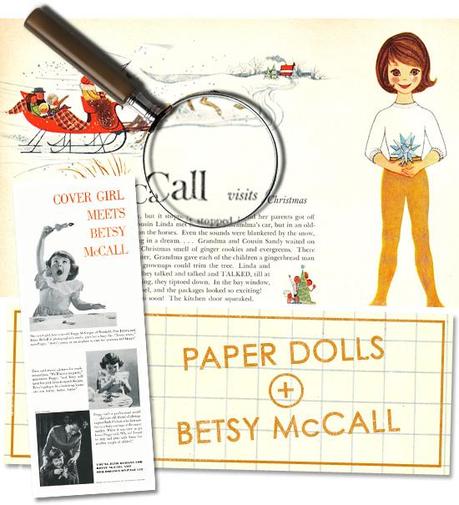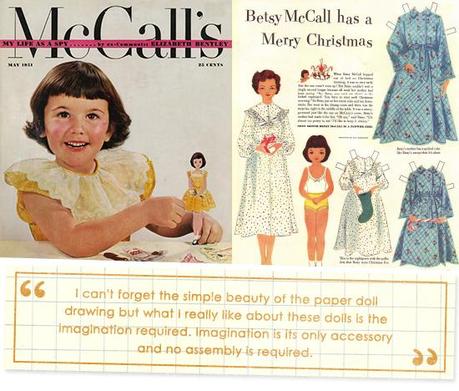
Have you ever discovered something and once you start digging, you find way more than you unearth? That was the case with me and paper dolls. Okay. Stop laughing. They are cool, even in today’s high tech world, and they have a neat history.
Out of secrecy, at least at the time, Anto told me that she was working on a project that involved paper dolls. I knew that paper dolls existed, just like I know the planet Mars exists, but that’s about as far as my knowledge went. Similar to a bowl of Cheerios, the history of the paper dolls was something I wanted to learn about because it seemed, well, simple. It’s a flat object that is two dimensional – that’s as complicated as it gets. But sometimes simple fun with no accessories is all that is needed to have fun.
The history of paper dolls is rooted in many cultures, countries and time periods. According to The Original Paper Doll Artists Guild, paper dolls have “existed as long as there have been paper and creative people to apply images to it. Paper figures have been used in ritual ceremonies in Asian cultures for many centuries. An ancient Japanese purification ceremony dating back to at least A.D. 900 included a paper figure and a folded paper object resembling a kimono which were put to sea in a boat.” But that’s not important. What is important, at least to me, is when the modern day paper doll was invented. A-close-to-modern-day paper doll appeared in the mid-1700s. Called “pantins,” they were a cross between a puppet and a paper doll and were made for several reasons - as a satirical, sociopolitical illustration of popular figures of the day (royalty, actors, actresses) or for storytelling. But because they didn’t come with garments to fit the forms, they can’t be consider a true paper doll. Later on in the century is when the first modern day paper dolls appeared. They were created for the wealthy as a way for their personal seamstress to showcase current fashions or again, represent popular figures of the time satirically.
Paper dolls went from being handmade to mass manufactured just before 1900. McCoughlin Brothers, founded in 1828, became the largest manufacturer of paper dolls in the United States. Some of their most famous characters, which sold for five or cents, were Dottie Dimple, Lottie Love, and Jenney June. Talk about alliteration, people. In 1920, they were sold to Milton Bradley. Another publishing company printing paper dolls around the same time was Raphael Tuck. Made in Europe, they are the most widely known source of antique paper dolls, mostly because they began as the personal paper doll maker for Queen Elizabeth II. Tucks dolls are easy to spot because they came in sets with many costumes and interchangeable heads.
Paper dolls height was in the early and mid-twentieth century. As a marketing strategy to get mothers to purchase magazines, Ladies Home Journal, Good Housekeeping, The Delineator (Butterick), and many other lady’s and children’s magazine printed cut-out characters along with stories of their families, friends, and pets. Taking into account the time period, it is easy to understand why paper dolls became so popular. World War I, The Great Depression, and World War II all occurred between 1900 and 1950. All were horrible world events that effected the pocket book of worldwide citizens and paper dolls were a cheap way to keep children occupied. In a letter to a collector, Maxine Waldron, also a collector, wrote ““My first paper dolls were Teddy Bears …which I made when my parents could not afford to buy me a Teddy Bear. Later, the Lettie Lane paper dolls appeared in the Ladies Home Journal so I sold the magazine so I could get these … free. My interest in paper dolls lay dormant many years as I pursued my career as an artist and art teacher … [Later] I saw one of Marion Howard’s advertisements and ordered some of her dolls. She had a friend in Florida who had a paper doll collection; when this friend died, I bought her entire collection…. I often bought duplicates from other collectors; I ordered wherever I saw them advertised.”

And then came Betsy McCall, the best known magazine paper doll in America. Okay, I am biased towards Betsy because the 1950s are one of my favorite decades. I’m going to use a gay word but the 1950s were, or at least seemed, gay and I like that. She was introduced in the May issue of McCall’s magazine in 1951. In the initials design, she is described as “five, going on six, and she lives in a little white house with a porch and a yard to play in. Her mother and daddy and Nosy, her puppy, live in the white house too. Nosy is six months old. Betsy and Nosy and Betsy’s friends play together all the time. And every month from now on they’ll come to play with you too.” The character was such a hit that McCall’s asked Ideal Toy Company to produce a doll for them in 1952. Later, other characters such as parents, brothers, sisters, and cousins of Betsy’s were introduced. If you can believe it, Betsy paper dolls are still produce today (Tonner Doll Company).
Back to simplicity. Paper dolls are nothing more than an image on a flat, two-dimensional piece of paper. Paper dolls are the first step, imagination is the next. McCall’s and other paper doll producing companies provided the beginning of the story but it was up to the children (and sometimes parents) to write the remaining chapters. That’s when imagination and active thinking come into the mix. I have a thing against television. Television supplies images to the brain rather than the brain supplying images. Now, there are times when everyone needs mindless activity but the amount of it in today’s world is beyond gluttonous. Along with exercising manual dexterity, paper dolls require the player to dream a three dimensional story using their mind. Have you seen the movie Hook? One scene shows Peter and The Lost Boys sitting down to eat dinner and while all the little men shove food into their mouths, Peter watches in awe. He doesn’t understand how they’re eating because there isn’t any food on the table! But there is food, lots of it, he just can’t imagine it. Peter and Rufio, the leader of The Lost Boys, get into an argument and just after Peter says to Rufio, “You two-toned zebra-headed, slime-coated, pimple-farmin’ paramecium brain, munchin’ on your own mucus, suffering from Peter Pan envy!” is when Peter sees the food (by the way, if you don’t know what a paramecium is, it’s a a one-celled critter with no brain, that can’t fly! Don’t mess with me man, I’m a lawyer!”). He finally got it – an imagination. I can’t forget the simple beauty of the paper doll drawing but what I really like about these dolls is the imagination required. Imagination is its only accessory and no assembly is required.

This is a great site to download high resolution images of many Betsy McCall paper dolls.
If you only have five minutes to spare, A World Of Dolls gives a brief interview of Betsy McCall.
I found the most thorough and accurate history of paper dolls here on The Original Paper Doll Artist Guild.
If Norma Komali is still using paper dolls to showcase her designs, then we know they’re cool. In an interview that Amy posted on her blog, the designer talks about how paper dolls an aspect of running her business.

